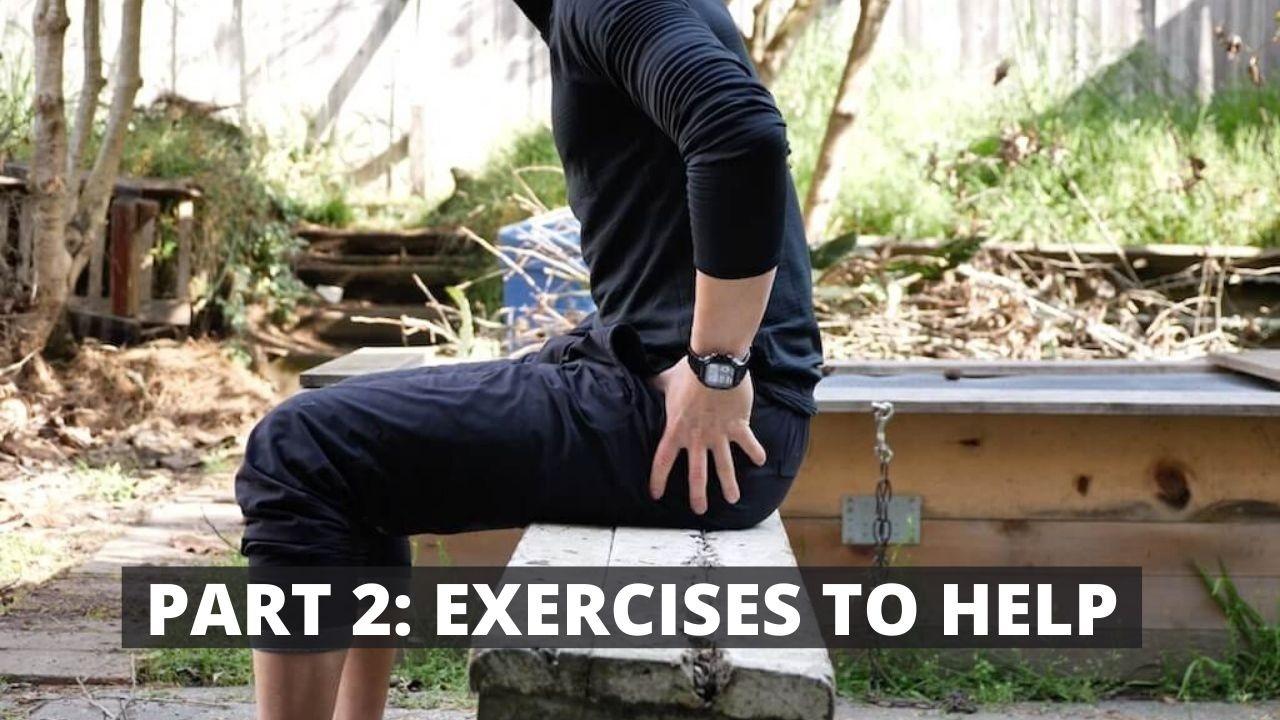Hard to get up from a chair? Part 2: Exercises to help you stand up

This is Part 2 in a series. If you want a more detailed understanding of WHY you have trouble getting up out of a chair, check out Part 1 here.
A quick summary of why it's hard to get up from a chair
Long periods of sitting train your muscles into the sitting position. Standing requires those muscles to do something totally different.
To help your body relearn how to stand (and with less of that creaky transition time), you need to give your body the right exercises.
Let's show you a few simple ones right now!
A simple exercise routine to help you get out of your chair
If you haven't done any exercise at all in years, you may only be able to do this full routine twice a week. But you will be able to gradually do it more as your body adapts, almost definitely being able to do it every day without issue.
If the last exercise gets you REALLY sore but the others feel okay, you can just do the first two 5-6 days a week and gradually ramp up the frequency of the last one as you feel yourself getting stronger.
1. Stretching the hip flexors
The first thing we want to do is open up the front of your hips. We can do that with a basic stretch for your quads. This video will walk you through the stretch.
Do 2 rounds on each leg. And do an extra on your stiffer side. Be sure to hold at least 30 seconds and up to 2 minutes. And use a wall or stick to help you balance if you need it!
2. Building strength in your hip extensors (the butt!)
Next we want to make sure you can activate the muscles on your back side. Your butt muscles. To do that, we can do a simple exercise like the glute bridge.
Do two to three sets of these. Aim for 5-20 reps. Hold at the top position for a count of 5 (OR MORE) to really feel your glutes engage.
You should NOT feel the work in your low back. If you do, use one or all of the following strategies:
- Go only as high as you can while feeling the glutes exclusively doing the work.
- Do fewer reps (only as many as you can while still feeling the glutes doing the work).
- Adjust your foot position to make sure you feel the glutes.
3. Building leg strength and grooving the pattern of standing up
Now that you've laid some ground work, you can start to work on "grooving the pattern."
What does that mean? It means practicing the thing you want to do in the way you intend to do it!
So in this case, we want to practice using your body to get up out of a chair with the strength of your butt and leg muscles (instead of that weird dance you've been relying on with your hands, arms, and back muscles).
To do that, we can use a simple exercise called the Box Squat.
Do two to three sets of 5-10. Use a box or chair height that is challenging BUT THAT IS STILL HIGH ENOUGH THAT YOUF EEL IN CONTROL.
That means if you feel like you're free-falling at any point during the motion, you need a higher box or chair.
Check out the exercise here:
Safety considerations
Always listen to your body. And learn how to interpret the signals.
If you feel muscles getting stretched, fatigued, and tired, that's GOOD discomfort. Your body will adapt!
If you are getting strong signals of pain, pinching, or discomfort right in a joint, you're probably doing something too intensely. Back off until you feel challenging sensations IN MUSCLES.
You'll be standing up from your chair soon!
We've seen this problem with clients many times over the years. As difficult to believe as it may sound, it's just going to take a little time to train your body for this motion!


